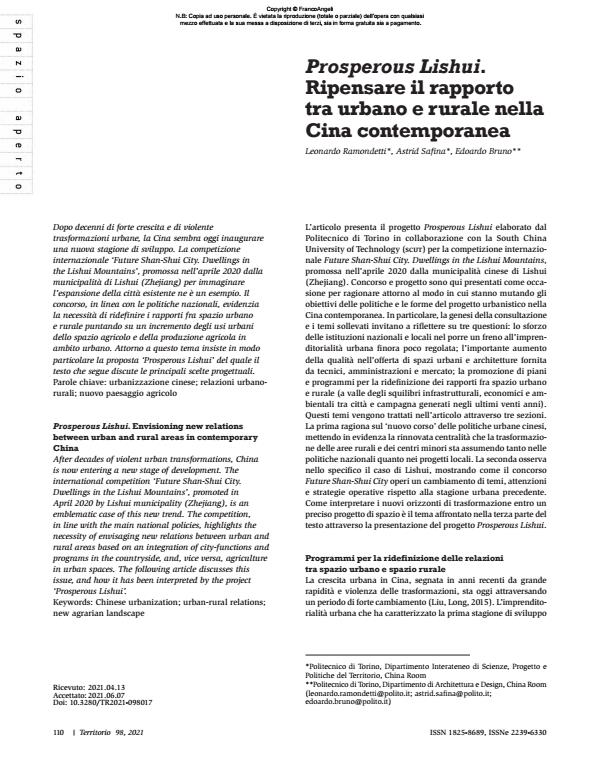Prosperous Lishui. Ripensare il rapporto tra urbano e rurale nella Cina contemporanea
Titolo Rivista TERRITORIO
Autori/Curatori Leonardo Ramondetti, Astrid Safina, Edoardo Bruno
Anno di pubblicazione 2022 Fascicolo 2021/98
Lingua Italiano Numero pagine 13 P. 110-122 Dimensione file 882 KB
DOI 10.3280/TR2021-098017
Il DOI è il codice a barre della proprietà intellettuale: per saperne di più
clicca qui
Qui sotto puoi vedere in anteprima la prima pagina di questo articolo.
Se questo articolo ti interessa, lo puoi acquistare (e scaricare in formato pdf) seguendo le facili indicazioni per acquistare il download credit. Acquista Download Credits per scaricare questo Articolo in formato PDF

FrancoAngeli è membro della Publishers International Linking Association, Inc (PILA)associazione indipendente e non profit per facilitare (attraverso i servizi tecnologici implementati da CrossRef.org) l’accesso degli studiosi ai contenuti digitali nelle pubblicazioni professionali e scientifiche
Dopo decenni di forte crescita e di violente trasformazioni urbane, la Cina sembra oggi inaugurare una nuova stagione di sviluppo. La competizione internazionale ‘Future Shan-Shui City. Dwellings in the Lishui Mountains’, promossa nell’aprile 2020 dalla municipalità di Lishui (Zhejiang) per immaginare l’espansione della città esistente ne è un esempio. Il concorso, in linea con le politiche nazionali, evidenzia la necessità di ridefinire i rapporti fra spazio urbano e rurale puntando su un incremento degli usi urbani dello spazio agricolo e della produzione agricola in ambito urbano. Attorno a questo tema insiste in modo particolare la proposta ‘Prosperous Lishui’ del quale il testo che segue discute le principali scelte progettuali.
Parole chiave:urbanizzazione cinese; relazioni urbanorurali; nuovo paesaggio agricolo
Leonardo Ramondetti, Astrid Safina, Edoardo Bruno, Prosperous Lishui. Ripensare il rapporto tra urbano e rurale nella Cina contemporanea in "TERRITORIO" 98/2021, pp 110-122, DOI: 10.3280/TR2021-098017